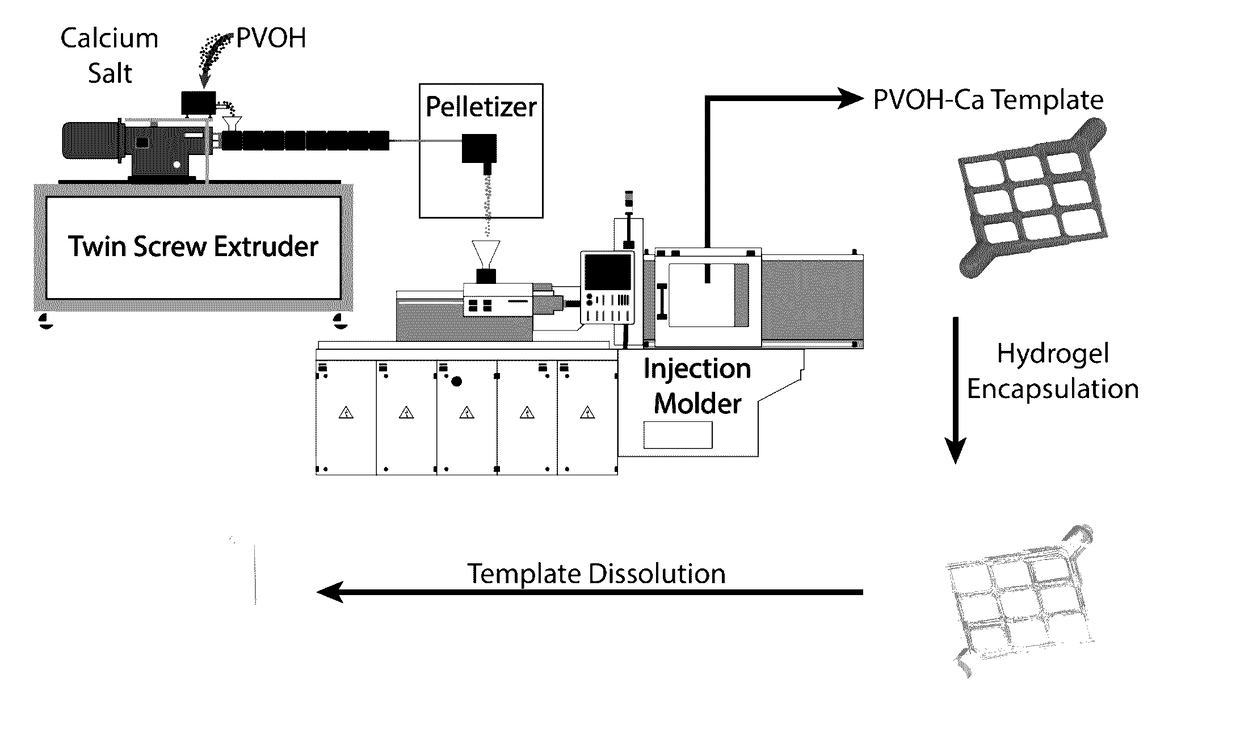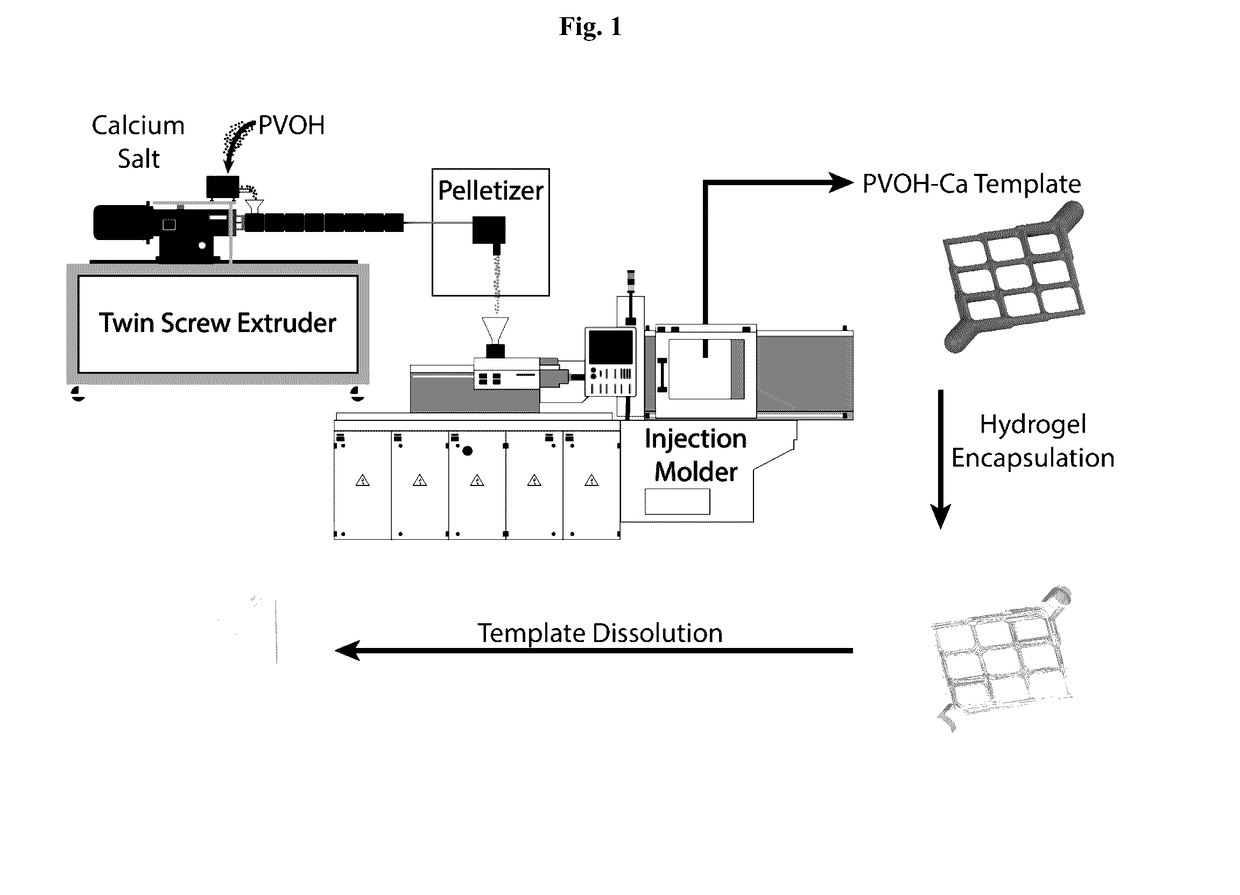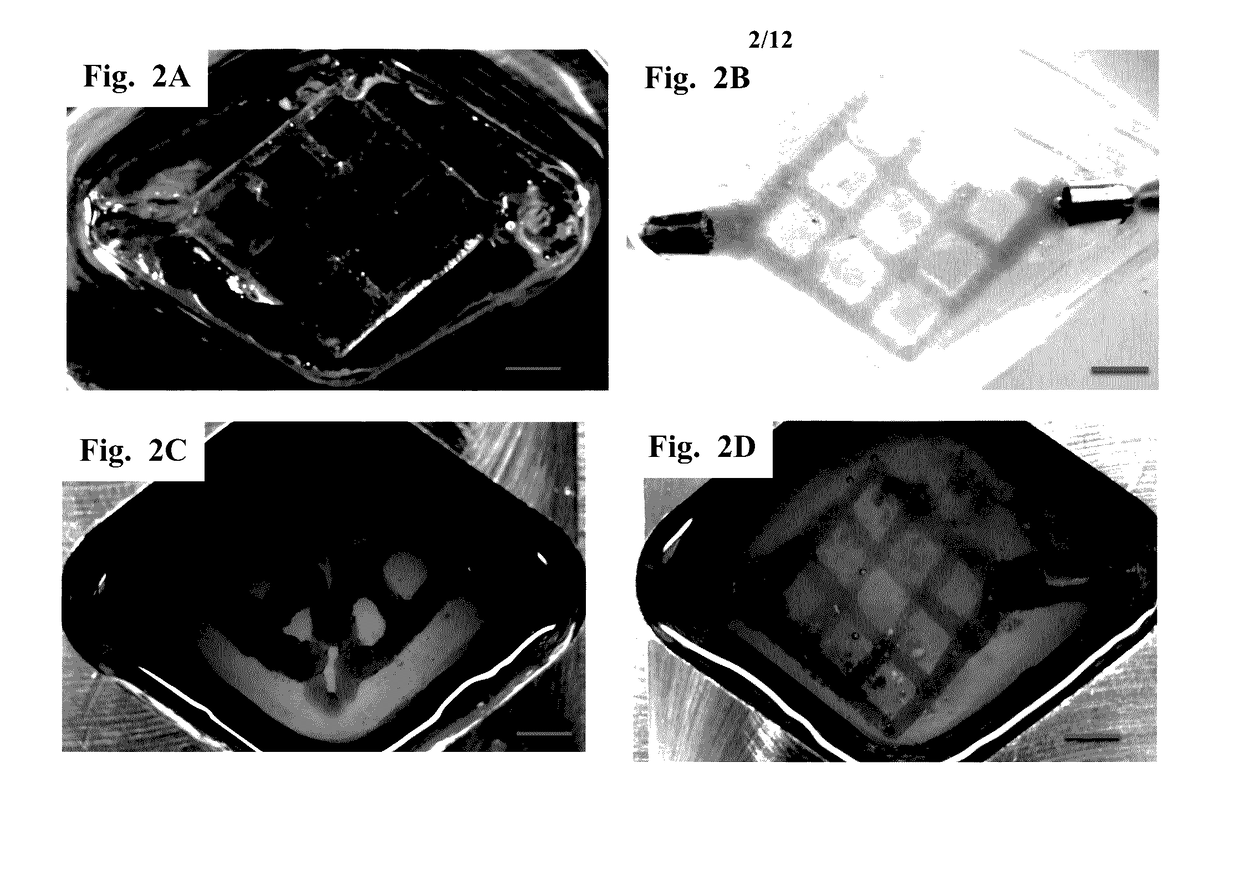Sacrificial Templates Comprising a Hydrogel Cross-linking Agent and Their Use for Customization of Hydrogel Architecture
a cross-linking agent and template technology, applied in the field of sacrificial template materials comprising a hydrogel cross-linking agent and their use for customization of hydrogel architecture, can solve the problems of brittle and inelastic carbohydrate glass template, fdm and sla/solvent casting fabrication techniques are not scalable for mass production, and the structure of the template is not elastic and elasti
- Summary
- Abstract
- Description
- Claims
- Application Information
AI Technical Summary
Benefits of technology
Problems solved by technology
Method used
Image
Examples
example 1
and Methods for Fabrication of PVC-Calcium Templates
[0083]Hydrogel biomaterials are used throughout the field of tissue engineering as versatile scaffolds to support 3D cell growth and shape the morphology of tissue constructs (1-6). In vivo, normal tissue development and physiology relies upon proper cytoarchitectural organization at multiple length scales. Hence, several methods have been developed for engineering the macro-to-microscale architecture of hydrogel scaffolds including layer-by-layer 3D printing technologies, such as fused deposition modeling (FDM), and stereolithography (SLA) (7-10). Recently, these methods have been used to fabricate sacrificial templates that enable unprecedented, rapid casting of intricate architectures within hydrogel monoliths (11, 12). For example, Miller et al. used a FDM printer to create interconnected 3D lattices composed of water-soluble carbohydrate glass filaments (13). Subsequently, the lattices could be encapsulated within hydrogels, a...
PUM
| Property | Measurement | Unit |
|---|---|---|
| temperature | aaaaa | aaaaa |
| temperature | aaaaa | aaaaa |
| Young's Modulus | aaaaa | aaaaa |
Abstract
Description
Claims
Application Information
 Login to View More
Login to View More - R&D
- Intellectual Property
- Life Sciences
- Materials
- Tech Scout
- Unparalleled Data Quality
- Higher Quality Content
- 60% Fewer Hallucinations
Browse by: Latest US Patents, China's latest patents, Technical Efficacy Thesaurus, Application Domain, Technology Topic, Popular Technical Reports.
© 2025 PatSnap. All rights reserved.Legal|Privacy policy|Modern Slavery Act Transparency Statement|Sitemap|About US| Contact US: help@patsnap.com



